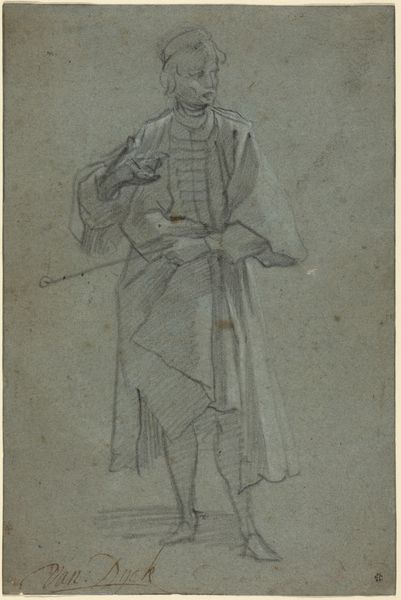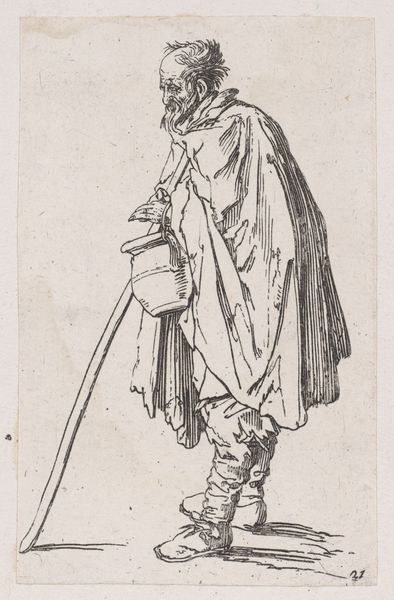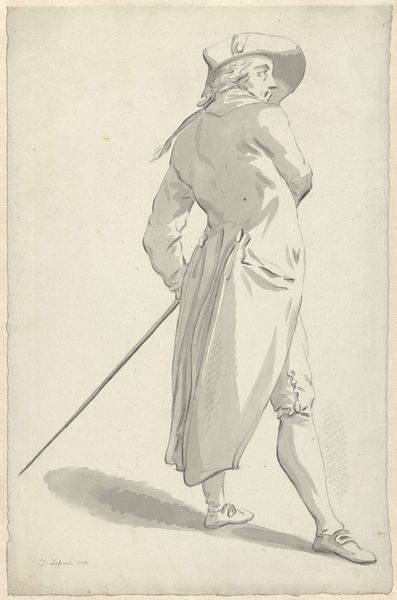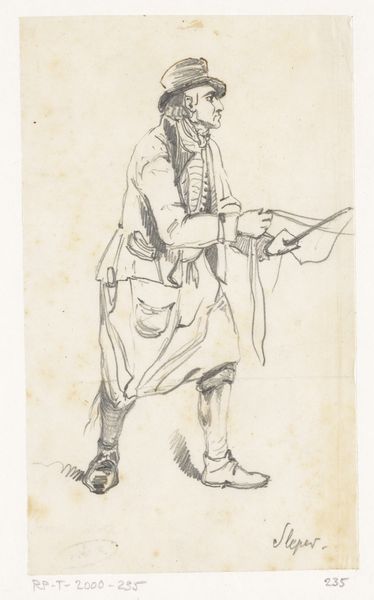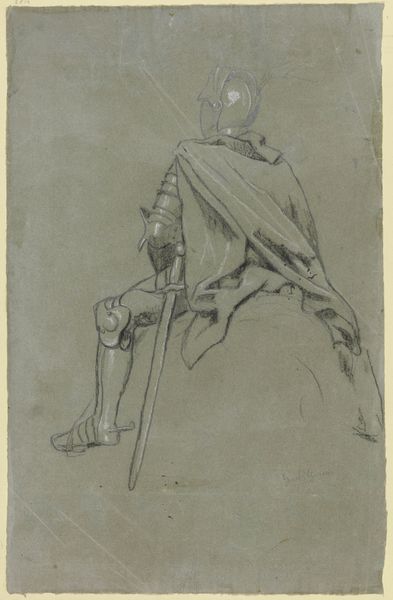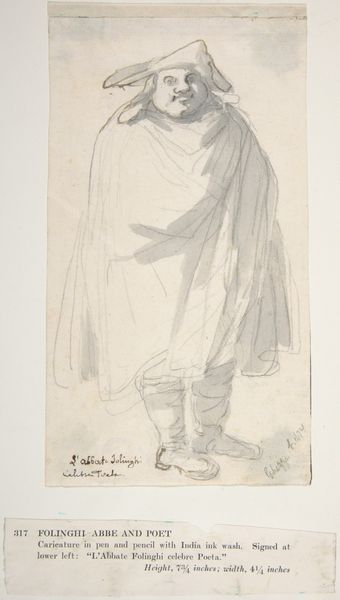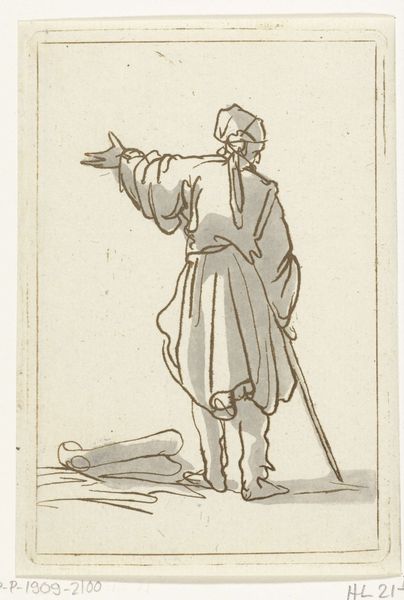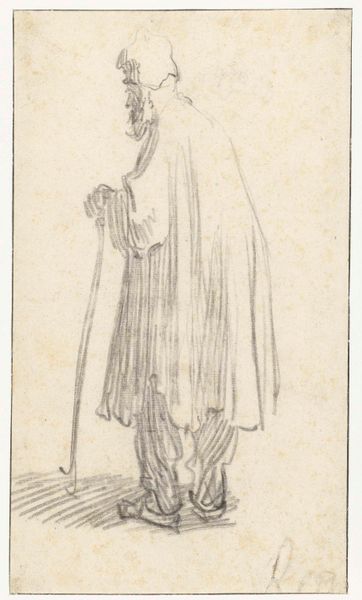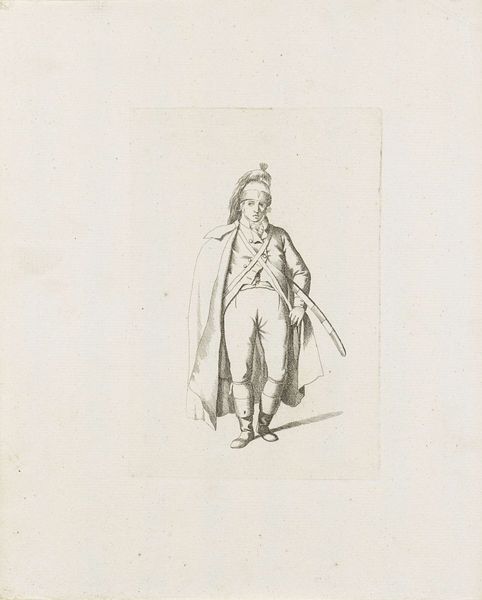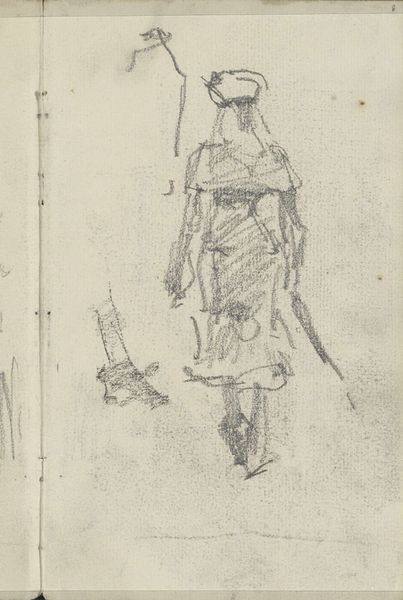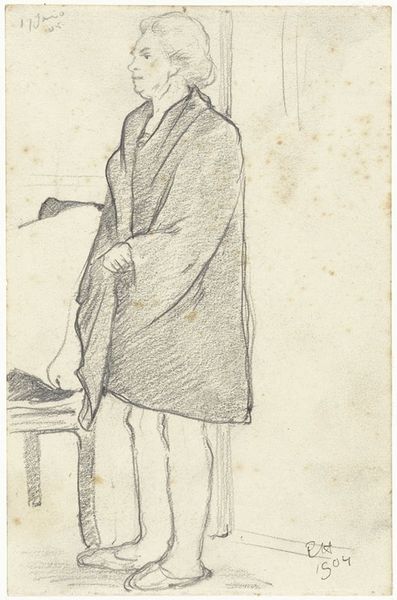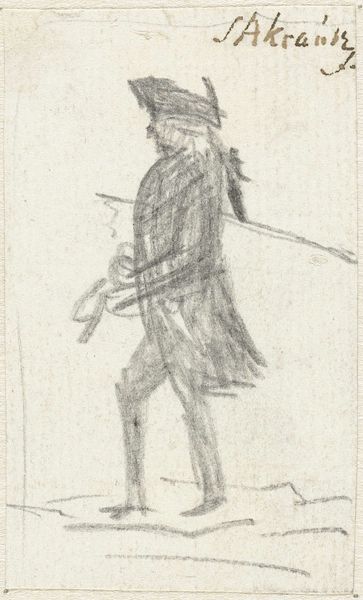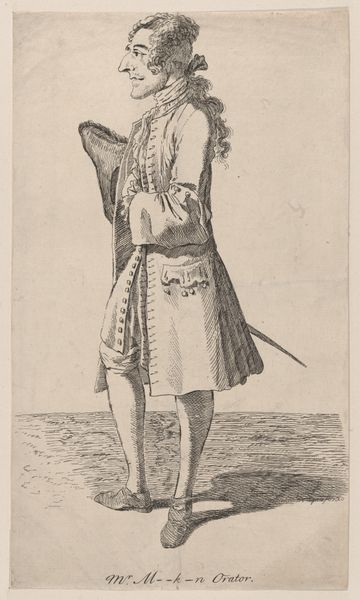
Dimensions: height 198 mm, width 124 mm
Copyright: Rijks Museum: Open Domain
Editor: So, this is "Staande jongeman, op de rug gezien," or "Standing Young Man, Seen from the Back," possibly from 1852, by David Bles. It’s a pencil drawing. There’s a loneliness to it, this figure standing by what seems like an easel. It’s spare, minimal. What grabs you when you look at this piece? Curator: Well, my dear, the spareness is the point, isn't it? It’s almost a ghost of a moment, caught in the act of… what? Contemplation? Despair? It's like a faded photograph, stirring half-forgotten emotions. That tentative attribution also plays tricks with the mind, it suggests a figure unsure even of their identity. It feels Romantic in that quiet, interior way, don't you think? But I’m also fascinated by the implied narrative—the presence of that easel. What isn't being painted, what isn't being said? What do you make of his posture? Editor: I see the Romantic elements you mention in the emotional feel of the work. But there’s almost a tension there… his posture suggests a contained energy, ready to unleash or withdraw at any second. Is that common for the Romantic period? Curator: Exactly! Romanticism often toys with the balance between inner turmoil and outward control. Like a volcano beneath a placid surface. Perhaps this figure is the artist, hesitant to create. The empty canvas looming like a void! The potential! Editor: It definitely gives you a lot to ponder, and it encourages me to dig a little deeper into what Romanticism means to me. Curator: Precisely! And that's what good art should do. We've both wandered into his private emotional landscape!
Comments
No comments
Be the first to comment and join the conversation on the ultimate creative platform.
